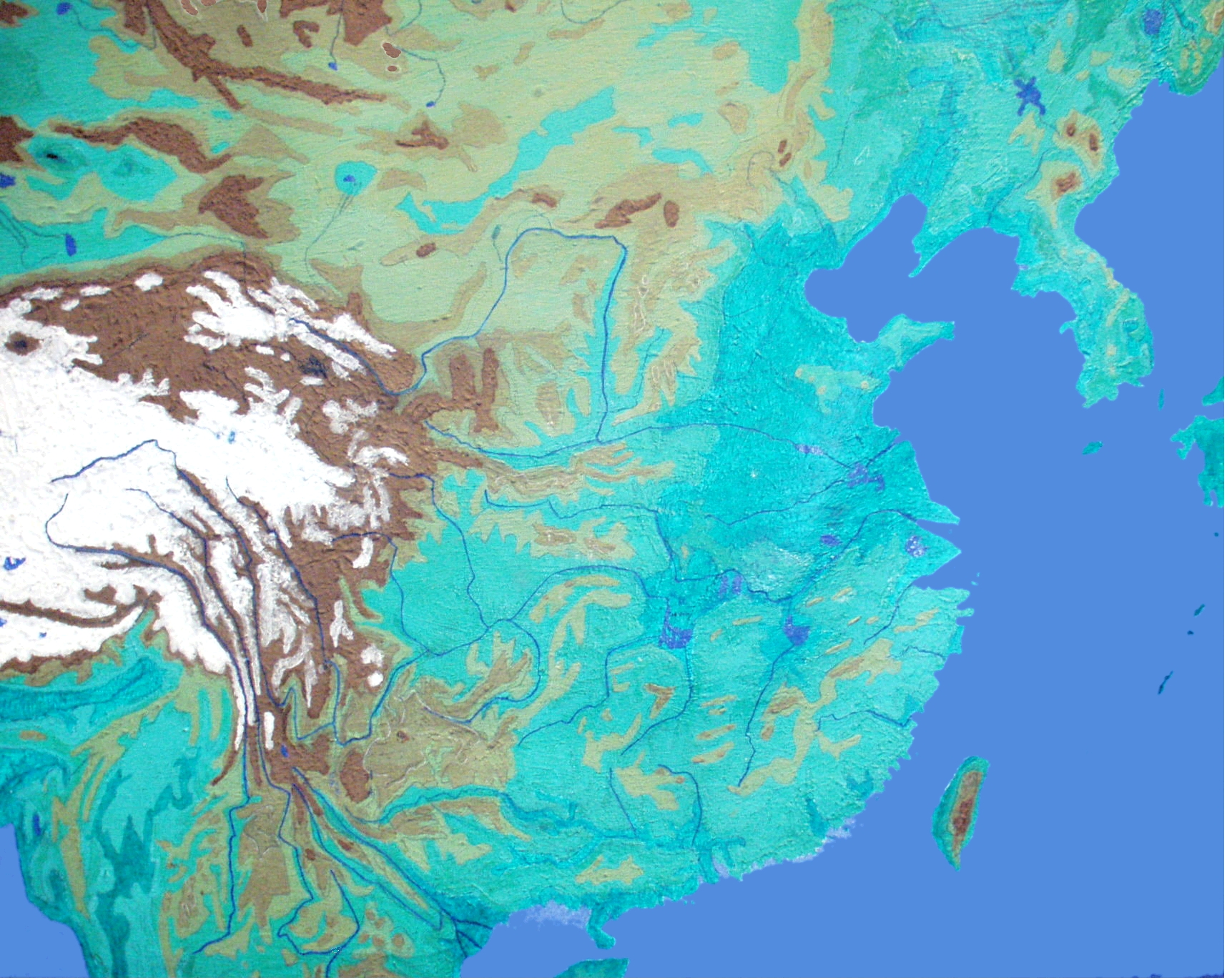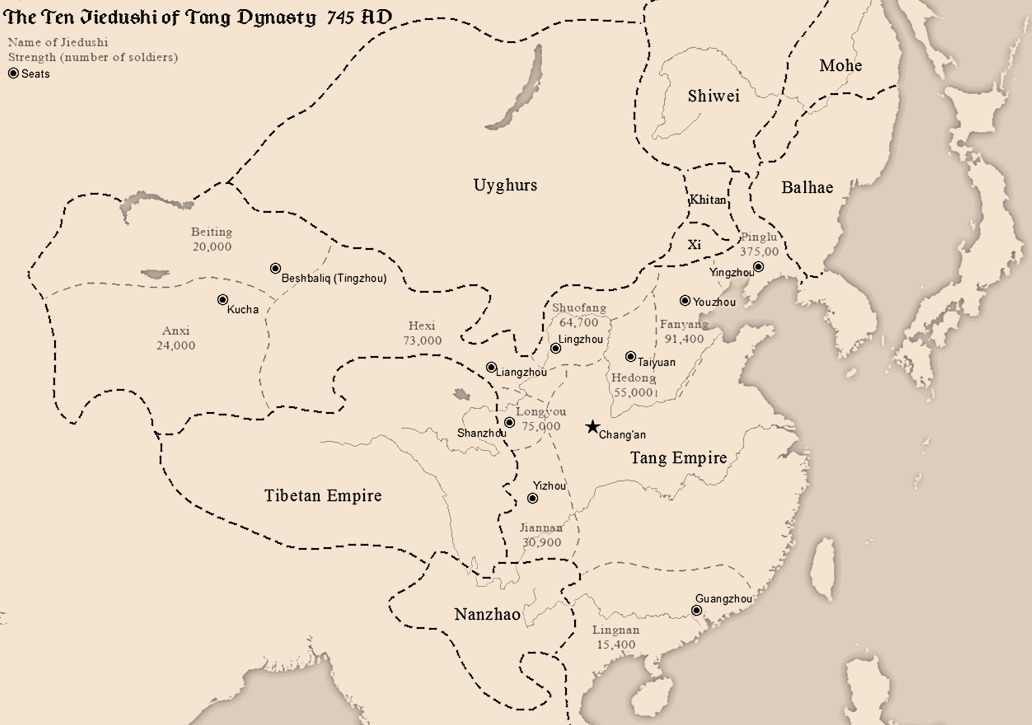|
Cui Huan
Cui Huan (崔渙) (died January 14, 769) was a Chinese politician during the Tang Dynasty, serving as a chancellor briefly during the reign of Emperor Suzong—although he was commissioned by Emperor Suzong's father Emperor Xuanzong, not Emperor Suzong. Background It is not known when Cui Huan was born. His grandfather Cui Xuanwei was a chancellor during the reigns of Wu Zetian and her son Emperor Zhongzong of Tang and was a key figure in Emperor Zhongzong's restoration. Cui Huan's father Cui Qu (崔璩) served as a deputy minister during the reign of Emperor Zhongzong's nephew Emperor Xuanzong and was said to be a capable writer. Cui Huan had at least two brothers—an older brother named Cui Zhen (崔震) and a younger brother named Cui Bi (崔賁). Cui Huan himself was said to be well-learned in the Confucian classics and rhetoric. He started his official service career as the civil service officer (司功參軍, ''Sigong Canjun'') at Bo Prefecture (亳州, roughly moder ... [...More Info...] [...Related Items...] OR: [Wikipedia] [Google] [Baidu] |
Tang Dynasty
The Tang dynasty (, ; zh, t= ), or Tang Empire, was an imperial dynasty of China that ruled from 618 to 907 AD, with an interregnum between 690 and 705. It was preceded by the Sui dynasty and followed by the Five Dynasties and Ten Kingdoms period. Historians generally regard the Tang as a high point in Chinese civilization, and a golden age of cosmopolitan culture. Tang territory, acquired through the military campaigns of its early rulers, rivaled that of the Han dynasty. The Lǐ family () founded the dynasty, seizing power during the decline and collapse of the Sui Empire and inaugurating a period of progress and stability in the first half of the dynasty's rule. The dynasty was formally interrupted during 690–705 when Empress Wu Zetian seized the throne, proclaiming the Wu Zhou dynasty and becoming the only legitimate Chinese empress regnant. The devastating An Lushan Rebellion (755–763) shook the nation and led to the decline of central authority in the dynas ... [...More Info...] [...Related Items...] OR: [Wikipedia] [Google] [Baidu] |
Crown Prince
A crown prince or hereditary prince is the heir apparent to the throne in a royal or imperial monarchy. The female form of the title is crown princess, which may refer either to an heiress apparent or, especially in earlier times, to the wife of the person styled crown prince. ''Crown prince'' as a descriptive term has been used throughout history for the prince who is first-in-line to a throne and is expected to succeed (i.e. the heir apparent), barring any unforeseen future event preventing this. In certain monarchies, a more specific substantive title may be accorded and become associated with the position of ''heir apparent'' (e.g. Prince of Wales in the United Kingdom or Prince of Asturias in the Spain, Kingdom of Spain). In these monarchies, the term crown prince may be used less often than the substantive title (or never). Until the late twentieth century, no modern monarchy adopted a system whereby females would be guaranteed to succeed to the throne (i.e. absolute pr ... [...More Info...] [...Related Items...] OR: [Wikipedia] [Google] [Baidu] |
Zhejiang
Zhejiang ( or , ; , also romanized as Chekiang) is an eastern, coastal province of the People's Republic of China. Its capital and largest city is Hangzhou, and other notable cities include Ningbo and Wenzhou. Zhejiang is bordered by Jiangsu and Shanghai to the north, Anhui to the northwest, Jiangxi to the west and Fujian to the south. To the east is the East China Sea, beyond which lies the Ryukyu Islands. The population of Zhejiang stands at 64.6 million, the 8th highest among China. It has been called 'the backbone of China' due to being a major driving force in the Chinese economy and being the birthplace of several notable persons, including the Chinese Nationalist leader Chiang Kai-shek and entrepreneur Jack Ma. Zhejiang consists of 90 counties (incl. county-level cities and districts). The area of Zhejiang was controlled by the Kingdom of Yue during the Spring and Autumn period. The Qin Empire later annexed it in 222 BC. Under the late Ming dynasty and ... [...More Info...] [...Related Items...] OR: [Wikipedia] [Google] [Baidu] |
Hangzhou
Hangzhou ( or , ; , , Standard Mandarin pronunciation: ), also romanized as Hangchow, is the capital and most populous city of Zhejiang, China. It is located in the northwestern part of the province, sitting at the head of Hangzhou Bay, which separates Shanghai and Ningbo. Hangzhou grew to prominence as the southern terminus of the Grand Canal and has been one of China's most renowned and prosperous cities for much of the last millennium. It is a major economic and e-commerce hub within China, and the second biggest city in Yangtze Delta after Shanghai. Hangzhou is classified as a sub-provincial city and forms the core of the Hangzhou metropolitan area, the fourth-largest in China after Guangzhou-Shenzhen Pearl River agglomeration, Shanghai-Suzhou-Wuxi-Changzhou conurbation and Beijing. As of 2019, the Hangzhou metropolitan area was estimated to produce a gross metropolitan product ( nominal) of 3.2 trillion yuan ($486.53 billion), making it larger than the economy of ... [...More Info...] [...Related Items...] OR: [Wikipedia] [Google] [Baidu] |
Nepotism
Nepotism is an advantage, privilege, or position that is granted to relatives and friends in an occupation or field. These fields may include but are not limited to, business, politics, academia, entertainment, sports, fitness, religion, and other activities. The term originated with the assignment of nephews to important positions by Catholic popes and bishops. Nepotism has been criticized since the ancient times by several philosophers, including Aristotle, Valluvar, and Confucius, condemning it as both evil and unwise. Origins The term comes from Italian word ''nepotismo'',"Nepotism." Dictionary.com. Retrieved 20 June 2013. which is based on Latin root ''nepos'' meaning nephew. Since the ... [...More Info...] [...Related Items...] OR: [Wikipedia] [Google] [Baidu] |
Old Book Of Tang
The ''Old Book of Tang'', or simply the ''Book of Tang'', is the first classic historical work about the Tang dynasty, comprising 200 chapters, and is one of the Twenty-Four Histories. Originally compiled during the Five Dynasties and Ten Kingdoms period, it was superseded by the ''New Book of Tang'' which was compiled in the Song dynasty, but later regained acceptance. The credited editor was chief minister Liu Xu, but the bulk (if not all) of the editing work was actually completed by his predecessor Zhao Ying. The authors include Zhang Zhao, Jia Wei (), and Zhao Xi (). Zhao YiCh. 16 "Old and New Books of Tang" () ''Notes on Twenty-two Histories'' ( ). Structure The ''Old Book of Tang'' comprises 200 volumes. Volumes 1–20 contain the annals of the Tang emperors. Twitchett notes that coverage over time in the annals is most dense during the early and middle Tang, including only very sparse information in the late Tang after 847. Volumes 21–50 contain treatises, in ... [...More Info...] [...Related Items...] OR: [Wikipedia] [Google] [Baidu] |
Huai River
The Huai River (), formerly romanized as the Hwai, is a major river in China. It is located about midway between the Yellow River and Yangtze, the two longest rivers and largest drainage basins in China, and like them runs from west to east. Historically draining directly into the Yellow Sea, floods have changed the course of the river such that it now primarily discharges into the Yangtze. The Huai is notoriously vulnerable to flooding. The Qinling–Huaihe Line, formed by the Huai River and the Qin Mountains, is sometimes regarded as the geographical dividing line between Northern and southern China. This line approximates the January isotherm and the isohyet in China. The Huai River is long with a drainage area of . Course The Huai River originates in Tongbai Mountain in Henan province. It flows through southern Henan, northern Anhui, and northern Jiangsu where it pools into Lake Hongze. Nowadays the Huai River then runs southwards as the Sanhe River by way ... [...More Info...] [...Related Items...] OR: [Wikipedia] [Google] [Baidu] |
Yangtze River
The Yangtze or Yangzi ( or ; ) is the longest river in Asia, the third-longest in the world, and the longest in the world to flow entirely within one country. It rises at Jari Hill in the Tanggula Mountains (Tibetan Plateau) and flows in a generally easterly direction to the East China Sea. It is the seventh-largest river by discharge volume in the world. Its drainage basin comprises one-fifth of the land area of China, and is home to nearly one-third of the country's population. The Yangtze has played a major role in the history, culture, and economy of China. For thousands of years, the river has been used for water, irrigation, sanitation, transportation, industry, boundary-marking, and war. The prosperous Yangtze Delta generates as much as 20% of China's GDP. The Three Gorges Dam on the Yangtze is the largest hydro-electric power station in the world that is in use. In mid-2014, the Chinese government announced it was building a multi-tier transport netw ... [...More Info...] [...Related Items...] OR: [Wikipedia] [Google] [Baidu] |
Anshi Rebellion
The An Lushan Rebellion was an uprising against the Tang dynasty of China towards the mid-point of the dynasty (from 755 to 763), with an attempt to replace it with the Yan dynasty. The rebellion was originally led by An Lushan, a general officer of the Tang military system. The event involved military activity and direct deaths from battle, but also significant associated population loss from famine, and population dislocations. The event is also known, especially in Chinese historiography, either as the An–Shi Rebellion or as the An–Shi Disturbances (). The use of the term ''luàn'' ("chaos") indicates the extreme social instability and population loss which eventually resulted, far beyond the initial consequences of the rebellion. Traditionally, Chinese family names have begun with the family name first. In this case the family name of the initial rebel leader is An. The term ''Ān-Shǐ'' is used to recognize that the rebellion continued after An Lushan's death, with ... [...More Info...] [...Related Items...] OR: [Wikipedia] [Google] [Baidu] |
Gansu
Gansu (, ; alternately romanized as Kansu) is a province in Northwest China. Its capital and largest city is Lanzhou, in the southeast part of the province. The seventh-largest administrative district by area at , Gansu lies between the Tibetan and Loess plateaus and borders Mongolia (Govi-Altai Province), Inner Mongolia and Ningxia to the north, Xinjiang and Qinghai to the west, Sichuan to the south and Shaanxi to the east. The Yellow River passes through the southern part of the province. Part of Gansu's territory is located in the Gobi Desert. The Qilian mountains are located in the south of the Province. Gansu has a population of 26 million, ranking 22nd in China. Its population is mostly Han, along with Hui, Dongxiang and Tibetan minorities. The most common language is Mandarin. Gansu is among the poorest administrative divisions in China, ranking 31st, last place, in GDP per capita as of 2019. The State of Qin originated in what is now southeastern ... [...More Info...] [...Related Items...] OR: [Wikipedia] [Google] [Baidu] |
Qingyang
Qingyang () is a prefecture-level city in eastern Gansu province, China. Geography and climate Qingyang is the easternmost prefecture-level division of Gansu and is thus sometimes referred to as "Longdong" (). It forms an administrative peninsula, as it is surrounded, on all sides but the south, by Shaanxi and Ningxia. It is in the lower middle part of the Yellow River on the ''loess'' plateau and is within the eastern Gansu basin. Elevation ranges from 885 to 2082 meters above sea-level. There are 5 major rivers in Qingyang including the Malian (), Pu (), Hong (), Xilang (), and Hulu or "Gourd" (). Their combined annual flow is more than 800 million cubic meters. Bordering prefecture-level cities are: Shaanxi: *Yulinnorth * Yan'annortheast * Xianyangsoutheast Gansu: * Pingliangsouth/southwest Ningxia: * Guyuanwest * Wuzhongnorthwest Qingyang has a humid continental climate ( Köppen ''Dwb'') with monsoonal influences. The normal monthly mean temperature ranges f ... [...More Info...] [...Related Items...] OR: [Wikipedia] [Google] [Baidu] |
Wei Jiansu
Wei Jiansu (韋見素) (687–763), courtesy name Huiwei (會微), formally Duke Zhongzhen of Bin (豳忠貞公), was a Chinese politician who served as a chancellor during the reigns of Emperor Xuanzong of Tang and his son Emperor Suzong. As a young man, Wei served as a military aide to Emperor Xuanzong's father, the future Emperor Ruizong, then the Prince of Dan. He later served in various regional postings and senior offices at the Tang court in Chang'an, and though his conduct met with approbation, in the later stages of his career he was considered controllable. This, as well as his early connection to Emperor Ruizong, allowed the leading chancellor Yang Guozhong to install Wei as chancellor and director of the examination bureau late in Emperor Xuanzong's reign. During the chaos of the An Lushan Rebellion, Wei accompanied Emperor Xuanzong and Yang in their flight from Chang'an and was severely injured when the imperial guard massacred Yang and his family. Subsequently, after ... [...More Info...] [...Related Items...] OR: [Wikipedia] [Google] [Baidu] |


%2C_King_of_Wuyue.jpg)



